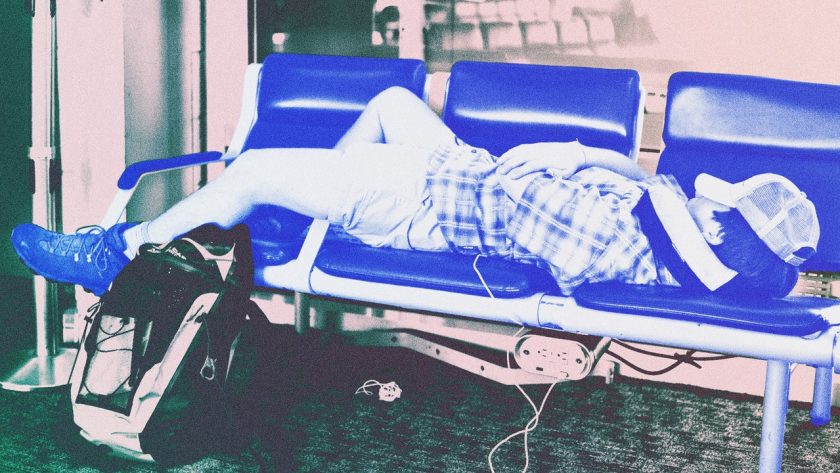Maybe it’s a warm shower, a couple pages in a book, turning your phone to airplane mode. Or perhaps you do a meditation and then go to bed. You have the opportunity to curate your ideal pre-snooze routine, and fill it with things that you can do anytime, anywhere—even on the move if you’re traveling for work or pleasure.
2. Engage Your Senses
What aromas do you like? Those scents can help you calm your nervous system and set the tone for slowing things down for the evening. Maybe it’s lighting a candle or using a certain hand cream or facial moisturizer. “Maybe it’s a little lavender or another essential oil that you rub on your temples or the nap of your neck, these little tiny rituals go a really long way, because then our brain and body start to understand that what comes next is sleep,” says Dr. Robbins.
3. Have a Consistent Sleep Schedule.
Just like you log on to your work computer every day at a certain time, aim to have that same diligence when it comes to how to go to sleep fast. When we keep a consistent schedule, the brain understands when you’re supposed to be tired, and in turn that’s when melatonin—the hormone that your brain produces in response to darkness and helps with the timing of your circadian rhythms—secretes. To make this deadline a habit, Dr. Robbins recommends working backwards.
“Look at your typical week; when do you have to be up earliest and then count back your sleep time,” she says. “If that’s seven hours, wonderful. Count back seven hours at a little bit of time, and then add 20 or 30 minutes to relax and unwind. That’s your target fall asleep time.”
4. Keep Your Bedroom Neutral.
“Bright energizing colors like reds and bright blues can be beautiful, but they also alert you,” says Dr. Robbins. “You really wanna pick colors that are soothing, so you walk in and feel instantly relaxed.” Think neutral colors or more of a pastel palette.
5. Invest in Your Bed.
Saving for a vacation? No-brainer. But what if you invested the same amount in your home environment as you do on your break from reality? Set a realistic budget for a solid mattress and pillows, and then get to testing. You want your sleep environment to feel decadent and cozy, something you genuinely look forward to experiencing come the day’s end.
6. Listen Carefully.
Noise pollution is everywhere, especially in major cities. The worst, according to Dr. Robbins, is intermittent noise—or sounds that stops and starts at irregular intervals (think sirens or cars near a major highway). A simple solve? Like Alpian, grab yourself a white noise machine to create a steady amount of background noise to filter out unwanted sounds.
7. Keep It Cool.
The ideal temperature range for sleep is between 65 and 68 degrees Fahrenheit. That range keeps us in a kind of a window where we won’t be susceptible to shivers or, conversely, sweating. A great aid for this? Cooling mattress pads, like Eight Sleep Pod Pro Cover, which also has sleep tracking and a vibrational function for a gentle wake alarm come morning.
8. If You’re Not Falling Asleep, Get Up.
As soon as you hear the voice in your head that gets down on you for still being awake, that’s your time to get up and get out of bed, because we wanna want to sure that we associate the bed with sleep and sleep alone. So if you find yourself thinking, ‘oh, not again, I’m a bad sleeper, I can’t sleep,’ that’s when you get out of bed and start the process over.
9. Nix Any Unnecessary Light.
Our eyelids are very thin, so making sure that you have thick curtains will help block out unwanted light. Don’t want to spend an arm and a leg on new curtains? Get blackout backings for your existing curtains or reach for an eye mask, instead.
10. Unplug Earlier.
When was the last time you did an audit of your social media and work habits? Reality check: Those are some of the strongest sources of a busy mind. If your mind is at work or otherwise plugged-in when you’re trying to get into bed, you may want to evaluate your strategy. Aim for at least 30 minutes of tech-free time before slipping in between the sheets.
11. Do a Brain Dump.
Feel like your wheels are turning and your mind’s moving 1,000 miles per hour? Take some time to do a “brain dump” before committing to sleep. Spend about five minutes writing down everything that’s on your mind and find solace in the fact that you’ll have time to do something about them later.



